Here’s a really simple math problem in 2D games development that has a surprisingly complex solution. If I were to give you angles a and b, how would you calculate 1) the direction — that is, clockwise being positive; and anti-clockwise being negative — and 2) magnitude of the shorter angle of rotation from a to b?
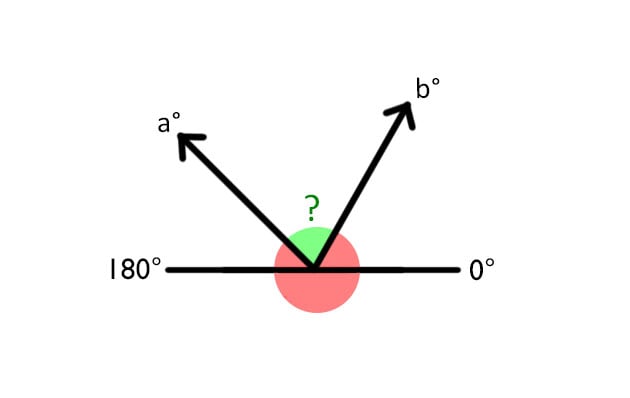
When you visualise it, both values seem so obvious; which was why I was so surprised I couldn’t figure it out. On the surface, it seems really simple — if you just take b – a, doesn’t it give you the solution?
(What looks like) the solution
Here’s an example that illustrates how taking b – a can work:
The case above demonstrates that for the rotations pictured below, the formula correctly gives us a counter-clockwise rotation of 20° as the shorter angle of rotation.
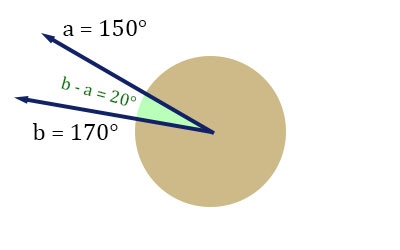
Conversely:
The case above demonstrates that for these other rotations pictured below, the formula correctly gives us a clockwise rotation of -10° as the shorter angle of rotation.
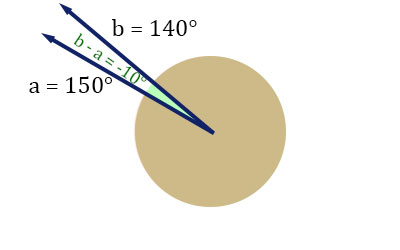
The problem with angular values
When you begin to dig deeper, however, you will quickly find that things can get surprisingly complex problem for 2 reasons:
- Angles loop around beyond 360°, so if a = 380° and b = 40°, we get 340° as the shorter angle of rotation. This is obviously wrong, because the shorter angle of rotation is never larger than 180°.
- In most (i.e. 99%) game engines, the lower half of the circle goes from 0° to -180°, like radians do (refer to the picture below). Hence, if we were to consider cases like a = 160° and b = -160°, we will get 320° as the shorter angle of rotation.
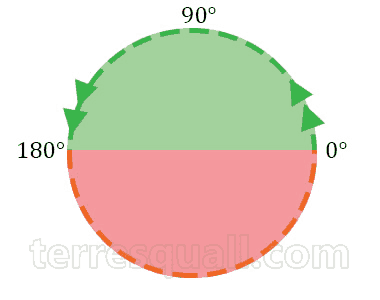
The (actual) solution
Well, a – b actually works. Once you convert the result so that it is between -180° and 180° (or -π and π), that is. Here’s how you convert any angle into a value between -180° and 180°:
- Firstly, if your result is already between -180° and 180°, then you ignore the following steps.
- Next, convert your result into an angle between -360° and 360°. All you have to do is to modulo the result with 360, i.e.
result % 360. - Finally, if your result is less than -180°, add 360° to it; otherwise, if it is more than 180°, subtract 360° from it.
Or, in short, expressed mathematically:
If that is hard to read, here’s a code snippet in C# that expresses the same thing:
float result = b - a; // Shorter angle of rotation. // If our result's value is more than 180 or less than -180. if(Mathf.Abs(result) > 180f) // Convert the value to be between -180 and 180. result = -Math.Sign(result) * (360f - Math.Abs(result));
Conclusion
Did the article help you figure out your angles? Or maybe you spotted some errors with our math? Feel free to leave us a comment below.
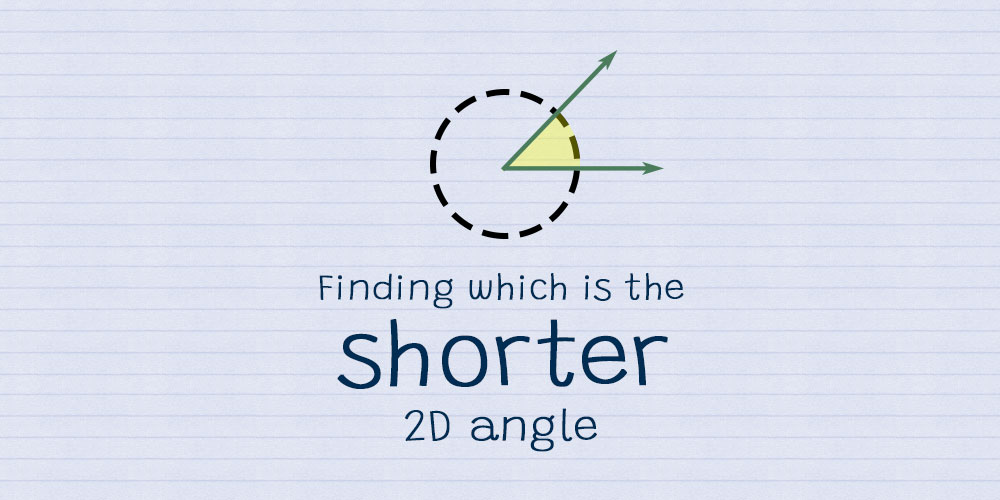


Thanks for the article! Minor nit: in step 3, you say “Finally, if your result is negative, add 360° to it; otherwise, subtract 360° from it.”. This should say “if your result is higher lower than 180°, add 360° to it; if it is higher than 180°, subtract 360° from it.”
This is what the rest of the article does, and is the correct thing to do. It’s just a typo in the prose that threw me off.
Ugh, and when I say “higher lower than 180°”, I mean “lower than -180°”. Sheesh. Way to correct a typo, me.
Hi Filip, many thanks for highlighting this inconsistency! The article has been rephrased with your suggestion.